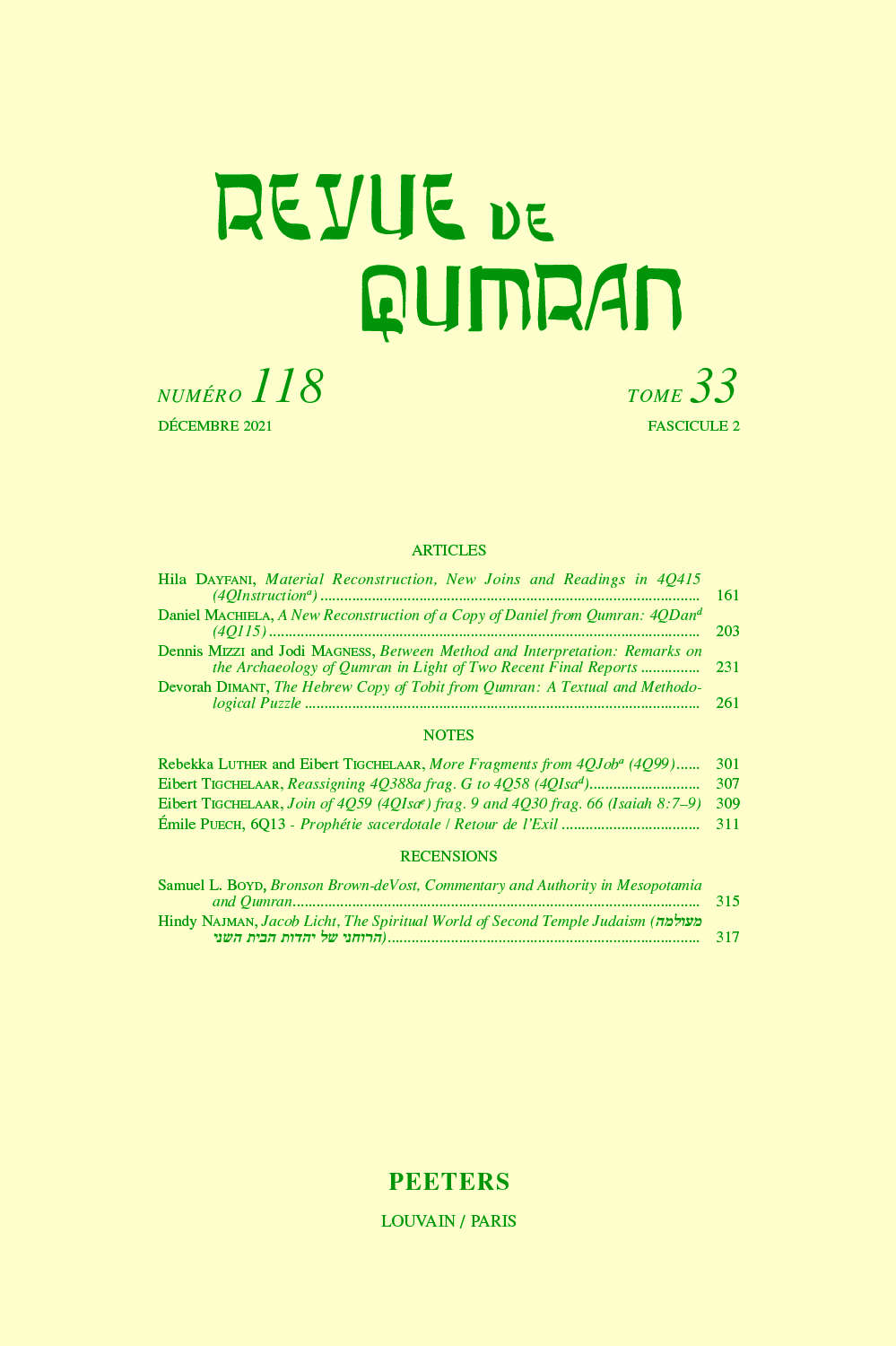 previous article in this issue previous article in this issue | next article in this issue  |

|
Document Details : Title: Jes 6,8-13 in 1QJesa Author(s): HELMS, Dominik Journal: Revue de Qumran Volume: 28 Issue: 2 Date: numéro 108, 2016 Pages: 191-213 DOI: 10.2143/RQ.28.2.3188976 Abstract : The prophet Isaiah is sent to harden the Israelites’ heart. In the history of its interpretation, Is 6,9f. has raised a number of serious theological questions. The present study focusses on its representation in the manuscripts of the Dead Sea Scrolls, notably the great Isaiah-Scroll (1QIsaa VI 1-10). The analysis shows that some of the differences are not confined to the level of orthography and phonetics but have considerable implications for the understanding of the text. Following this presumption, the text attests to a different proposition. It shows the dissociation of Yachad and the authorities of the temple in Jerusalem. 1QIsaa VI 1-10 bears witness to an inner Jewish reception of Isaiah’s prophecy that gives expression to the self-conception of the group. L’ordre donné à Isaïe d’endurcir les cœurs des Israélites (Is. 6, 9 ss.) a soulevé de nombreuses questions théologiques importantes dans l’histoire de l’interprétation de ce groupement de versets. La présente étude se focalise sa tradition dans les manuscrits de la Mer Morte, notamment dans le grand rouleau d’Isaïe (1QIsaa VI 1-10). L’analyse montre que si certaines différences ne sont que d’ordre orthographique ou phonétique, beaucoup d’entre elles sont pertinentes pour l’interprétation du texte et ouvrent de nouvelles dimensions pour sa compréhension. 1QIsaa VI 1-10 révèle la divergence entre Yachad et les autorités juives du temple. Ce texte témoigne donc d’une réception particulière de la prophétie d’Isaïe à l’intérieur du judaïsme et son utilisation par un groupe spécifique. |
|
